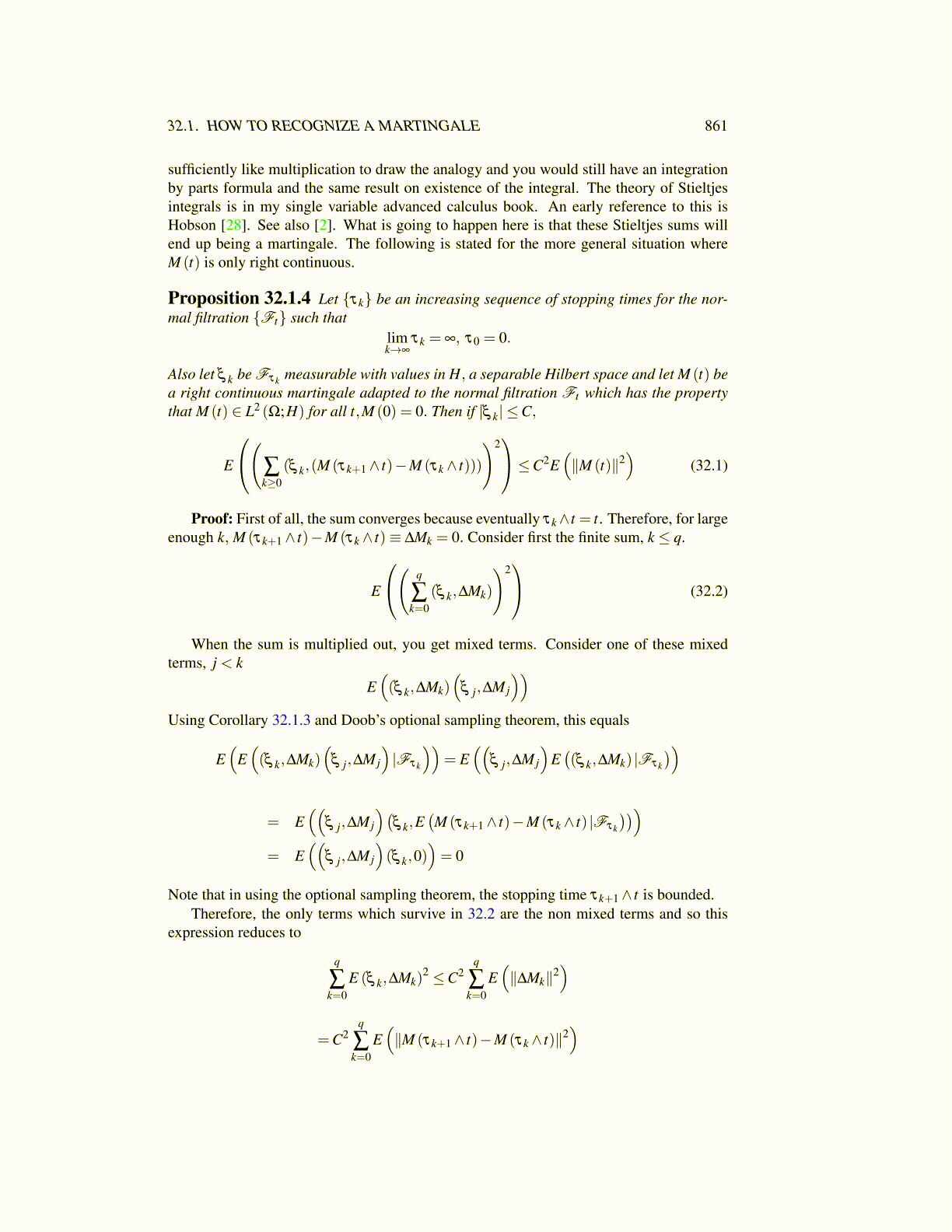
32.1. HOW TO RECOGNIZE A MARTINGALE 861
sufficiently like multiplication to draw the analogy and you would still have an integrationby parts formula and the same result on existence of the integral. The theory of Stieltjesintegrals is in my single variable advanced calculus book. An early reference to this isHobson [28]. See also [2]. What is going to happen here is that these Stieltjes sums willend up being a martingale. The following is stated for the more general situation whereM (t) is only right continuous.
Proposition 32.1.4 Let {τk} be an increasing sequence of stopping times for the nor-mal filtration {Ft} such that
limk→∞
τk = ∞, τ0 = 0.
Also let ξ k be Fτk measurable with values in H, a separable Hilbert space and let M (t) bea right continuous martingale adapted to the normal filtration Ft which has the propertythat M (t) ∈ L2 (Ω;H) for all t,M (0) = 0. Then if |ξ k| ≤C,
E
(∑k≥0
(ξ k,(M (τk+1∧ t)−M (τk ∧ t)))
)2≤C2E
(∥M (t)∥2
)(32.1)
Proof: First of all, the sum converges because eventually τk∧t = t. Therefore, for largeenough k, M (τk+1∧ t)−M (τk ∧ t)≡ ∆Mk = 0. Consider first the finite sum, k ≤ q.
E
( q
∑k=0
(ξ k,∆Mk)
)2 (32.2)
When the sum is multiplied out, you get mixed terms. Consider one of these mixedterms, j < k
E((ξ k,∆Mk)
(ξ j,∆M j
))Using Corollary 32.1.3 and Doob’s optional sampling theorem, this equals
E(
E((ξ k,∆Mk)
(ξ j,∆M j
)|Fτk
))= E
((ξ j,∆M j
)E((ξ k,∆Mk) |Fτk
))
= E((
ξ j,∆M j
)(ξ k,E
(M (τk+1∧ t)−M (τk ∧ t) |Fτk
)))= E
((ξ j,∆M j
)(ξ k,0)
)= 0
Note that in using the optional sampling theorem, the stopping time τk+1∧ t is bounded.Therefore, the only terms which survive in 32.2 are the non mixed terms and so this
expression reduces to
q
∑k=0
E (ξ k,∆Mk)2 ≤C2
q
∑k=0
E(∥∆Mk∥2
)
=C2q
∑k=0
E(∥M (τk+1∧ t)−M (τk ∧ t)∥2
)